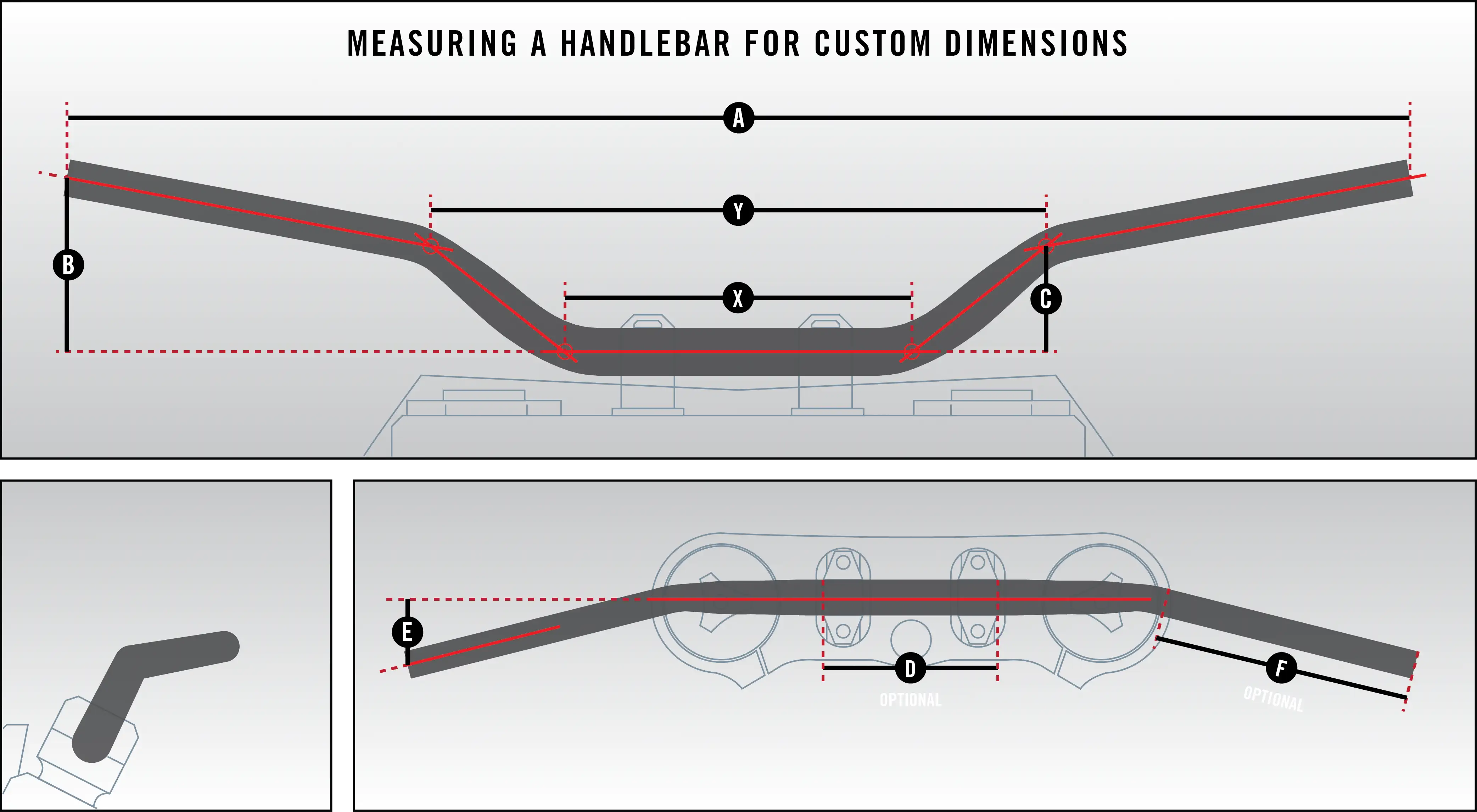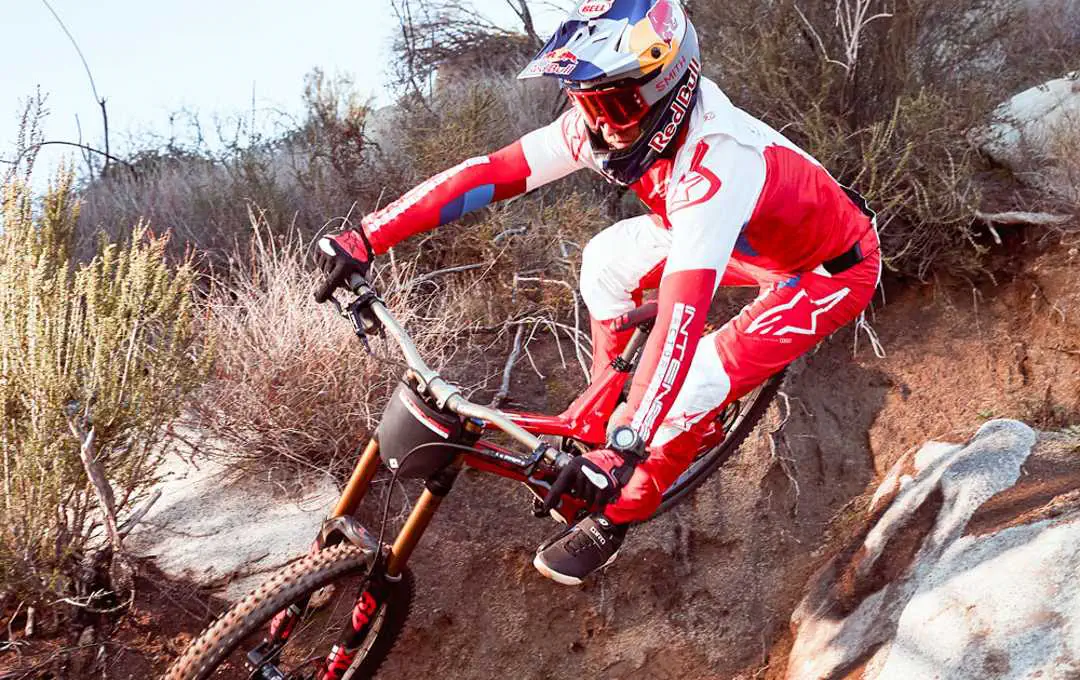The handlebars, or as we call them in white slang, "belanca", are among the most important contact points on the bike. While most riders are content with the original handlebars that come with the bike, upgrading the handlebars to suit you and your cycling style can have a significant impact on your trail riding.
The handlebars affect how the bike is steered and responded to and play an important role in how comfortable you feel on the bike. In general, the more technical and aggressive the ride, the wider and more massive are the handlebars. The Downhill and Enduro rider will appreciate the better control offered by the wider handlebar with a rise, which helps to move the rider's weight over the rear wheel while riding on technical terrain.
On the other hand, the Cross Country rider will appreciate the lighter, flatter and narrower handlebars, as this will allow him to shift the weight more to the front wheel during steep climbs in the XC style.
In this blog, we will delve into the world of mountain bike handlebars to make your choice easier.
What to look for when choosing a mountain bike handlebar
There are usually no strict rules when choosing a handlebar, so there is often a search for some middle ground between driving style, terrain and body dimensions.
After all, the best way to figure out which rudder is best for you is to try different models and styles. Of course, this is not always easy, so you need to consider the following when looking for a new handlebar.
Rise
Bend upwards (upsweep)
Bend back (Backsweep)
Mounting diameter
Material
Weight
How wide the handlebars should be
Over the years, the handlebars of the mountain bike have gradually expanded due to more aggressive riding, as the increased width can improve control of the bike. Some also believe that a wider handlebar should open the chest and improve breathing.
The wider the handlebars, the more leverage you can use to steer the front wheel. The forces that want to turn the wheel on the trail are reduced at the ends of the handlebars, and therefore it is so much easier to keep the wheel in the desired line.
Today, mountain bike handlebars are usually in between 700 and 800 mm.
When choosing a handlebar width, consider the type of terrain you will be riding on. Obviously, longer handlebars will make it harder to get through densely grown trees. However, it is true that riders who ride fast and aggressive trails benefit much more from wider handlebars.
Cross-country riders are more likely to decide for narrower handlebars, although even the latest XC bikes are equipped with increasingly wider handlebars. Meanwhile, all trail, enduro and DH bikes are increasingly equipped with handlebars as wide as possible.
If you're not sure what handlebar width to choose, it's recommended to go with a handlebar that's a bit wider than you think you might need, as you can still cut it.
If you decide on a wider handlebar, you can also decide for a shorter handlebar bracket, as a longer handlebar will effectively increase the reach on your bike.
What is rise and sweep of the steering wheel
A flat bar is, as the name suggests, straight from one end to the other. Riser bars, which are more common, rise from the center of the handlebars towards the handles.
We must also take into account the sweep of the steering wheel, for which there are two measures: backsweep and upsweep.
Rise: The vertical distance between the centerline of the handlebar at the clamp and at its ends.
Upsweep: How many degrees the handlebar is swept up from the stem to the end of the handlebar. The greater the flex, the more the shape of the handlebar changes as you rotate it in the handlebar mount. If you're looking from the front of the bike, you'll see the ends of the handlebars usually sit about 5 degrees from horizontal.
Backsweep: How many degrees the handlebar swings back from a perpendicular position to the handlebar bracket. The greater the flex, the greater the effect of the shorter stem.
How handlebar choice affects bike fit and handling
More backsweep has a similar effect to fitting a shorter stem, and the wider the handlebars, the further back you'll have hand grip. A handlebar with less back bend, however, will move the hand grip slightly forward and the length of the handlebar support will be more pronounced.
More lift (rise) moves the heavy rider up and back, thus reducing the weight on the front wheel and thus making riding on the rear wheel (wheelie / manual) easier, and you will also be placed in a more comfortable position. You may feel less assertive in more aggressive corners or have less control on steep climbs in this stance.
A lower, straighter handlebar will put you in a more aggressive so-called attack position or attacking position with more of the weight transferred to the front wheel, which helps with faster cornering and better control when climbing. On the other hand, lower handlebars make it difficult to lift the bike over obstacles on the trail and can cause hand fatigue on downhill slopes.
Carbon fibers against aluminum
Mountain bike handlebars are usually made of aluminum or carbon fiber. Aluminum is a slightly more popular choice, as the material is lightweight, durable, relatively cheap, and better able to withstand falls from the bike.
Carbon fiber handlebars also have some advantages over aluminum ones, namely carbon handlebars absorb vibrations better and help reduce hand fatigue. It also typically has a lighter weight, which is a good choice for riders where weight is a serious concern. The disadvantage of carbon handlebars is mainly the price, as they are much more expensive than aluminum handlebars. Likewise, it should also be less durable in the event of impacts.




